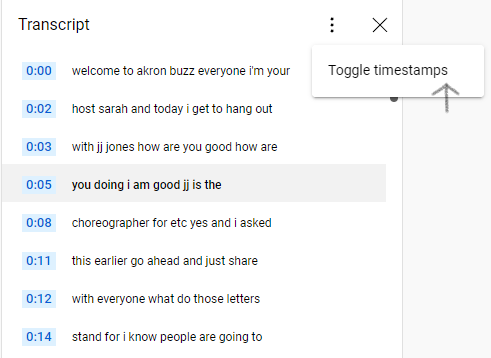It’s not lost on me that by writing a blog that offers ideas for search engine optimization I am actually bettering or optimizing our website in the eyes of the search engines. It’s also notable to acknowledge that I’m a video production professional, not an SEO expert. With that, I see nothing but benefit for everyone involved if we sporadically post marketing ideas or inspiration for content creators. And I pull together lots of our marketing ideas from our experience in creating video content for our clients. Of course many of the content creation ideas we would offer involve video production, but after all, video production is our expertise and our passion. We want more video projects and we love video for business and marketing.
One plan we have recently been using to assist clients create blogs or text for web pages is to record interviews with business owners or content experts within an organization. The process is relatively straight forward. We set up the camera, lights and microphones to produce high quality video interviews based on a number of open ended or conversation prompting questions. Once we get the subject comfortable and they open up and talk freely the answers or responses become content gold. And if the interviewer can keep the questions short, sweet and relevant to the general topic of the segment an editor can easily create a five minute blog video from the recording.

Taking a half-day recording interviews with important people in an organization can yield a lot of video. Of course, this leads to some editing or post production work . While it may not be needed to over-produce or spend too much time editing, it is usually worth at least adding lower third graphics and a title card style opening to identify the person being interviewed. If more than one camera was used during the interview then the video from each needs to be synchronized and cut together. Of course the audio needs to be “sweetened” or properly mixed down. Many professionals in media production would argue that this is the most important part.
The next step in the process is to post the whole interview to YouTube, ideally the organization’s fully set-up channel. This is where the eyebrows raise, the look of worry comes on and the protests start forming. At this moment the PR person in all media professionals comes out. Why must a group of random remarks about our agency be published online? Should legal review what was said? Let’s all review the video another umpteen times and ensure everything discussed can be shared. I have experience in crisis communications and one essential thing about understanding how to manage a PR crisis is knowing how to avoid one in the first place.
Here’s the reality. There are nearly a billion videos on YouTube. There are paid and promoted videos on YouTube that don’t get views. Nobody wants to watch a five minute video interview when they instead could be watching a compilation of cute cats in costumes or the top five best moments of their favorite flick. The reason we are posting longer interviews to YouTube is for the transcription. The words being translated into text form. While posting the video to YouTube does has a side benefit of potentially bettering your domain’s standing within the Google ecosystem and may trigger the algorithm to favor your site over others, the main purpose here is to give your content writer a useful tool to create a blog. Once the video is posted onto YouTube, their servers process it and create a transcription. If you toggle the timestamp button and copy the transcription to a document you will have pages and pages of text.


This is where the writer comes in. Professional writers need information and content. They need the interview. Your social media posts and your website need text. Search engines, love text. Writers like information directly from the source. A professional writer can extract the important information from the transcription and create a blog or text for a webpage. A company handbook could be improved. Technical manuals can be updated. New pages on the organization’s website can be created. A writer who has a good grasp on an organization’s policies, procedures, character and values can become the voice of the organization. Video interviews become a tool for a content writer. A good content writer armed with information and supported by an organization can make a big contribution and have a magnificent impact on the performance of a website.
Record video interviews. Make simple edits. Post them to YouTube and use the transcription. Our social medias and websites are hungry creatures. Feed them text and they will grow.
